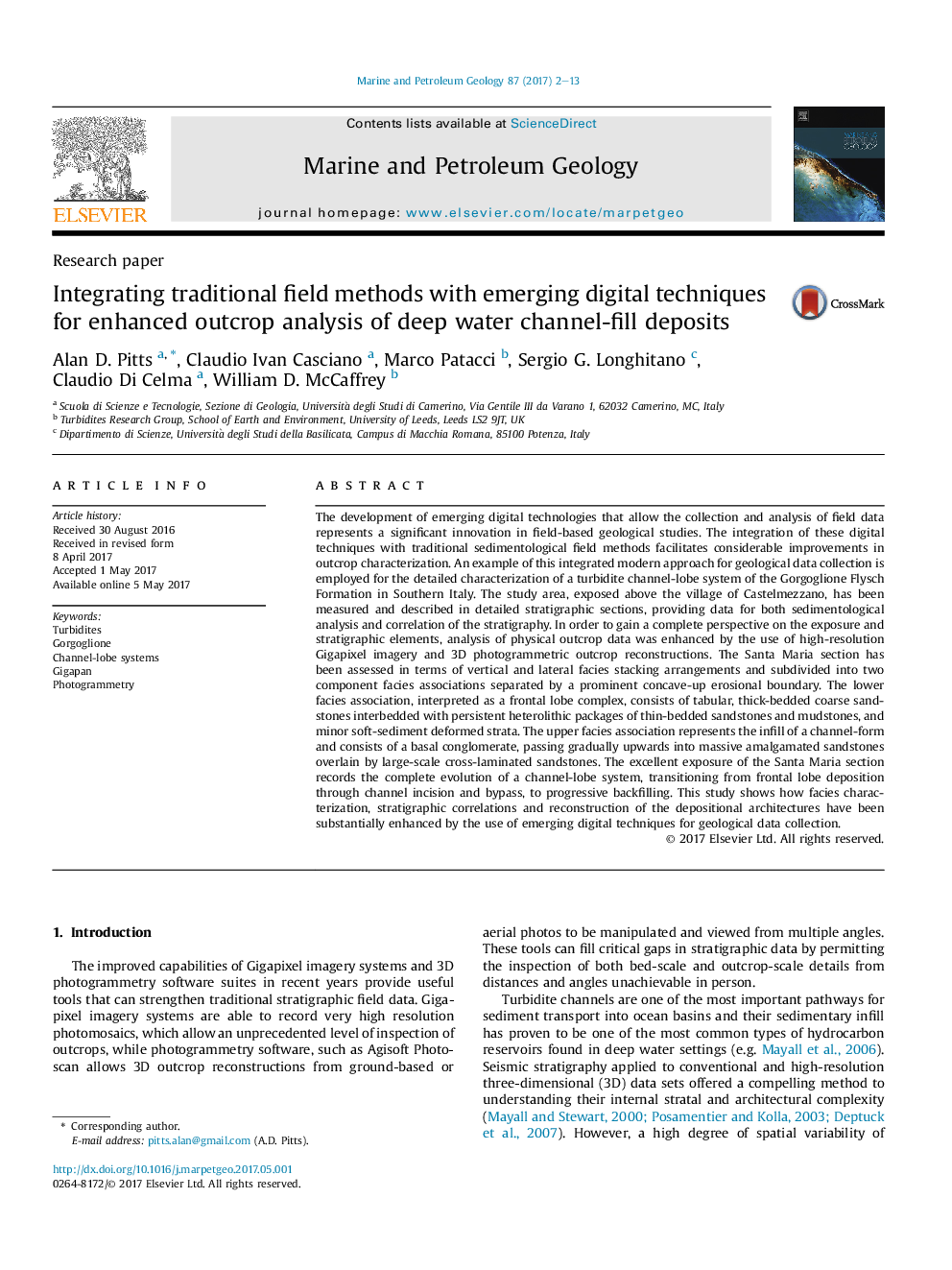| کد مقاله | کد نشریه | سال انتشار | مقاله انگلیسی | نسخه تمام متن |
|---|---|---|---|---|
| 5782124 | 1637140 | 2017 | 12 صفحه PDF | دانلود رایگان |
- Advanced stratigraphic analyses are performed using traditional field methods integrated with emerging digital techniques.
- New methodologies for creating digital outcrop reconstructions supplement physical data for enhanced facies characterization.
- The Santa Maria section represents the full lifespan of a slope turbidite channel from inception to filling and eventual abandonment.
- GigaPan imagery system and 3D photogrammetry shows wide applicability in a broad range of geoscience research applications.
The development of emerging digital technologies that allow the collection and analysis of field data represents a significant innovation in field-based geological studies. The integration of these digital techniques with traditional sedimentological field methods facilitates considerable improvements in outcrop characterization. An example of this integrated modern approach for geological data collection is employed for the detailed characterization of a turbidite channel-lobe system of the Gorgoglione Flysch Formation in Southern Italy. The study area, exposed above the village of Castelmezzano, has been measured and described in detailed stratigraphic sections, providing data for both sedimentological analysis and correlation of the stratigraphy. In order to gain a complete perspective on the exposure and stratigraphic elements, analysis of physical outcrop data was enhanced by the use of high-resolution Gigapixel imagery and 3D photogrammetric outcrop reconstructions. The Santa Maria section has been assessed in terms of vertical and lateral facies stacking arrangements and subdivided into two component facies associations separated by a prominent concave-up erosional boundary. The lower facies association, interpreted as a frontal lobe complex, consists of tabular, thick-bedded coarse sandstones interbedded with persistent heterolithic packages of thin-bedded sandstones and mudstones, and minor soft-sediment deformed strata. The upper facies association represents the infill of a channel-form and consists of a basal conglomerate, passing gradually upwards into massive amalgamated sandstones overlain by large-scale cross-laminated sandstones. The excellent exposure of the Santa Maria section records the complete evolution of a channel-lobe system, transitioning from frontal lobe deposition through channel incision and bypass, to progressive backfilling. This study shows how facies characterization, stratigraphic correlations and reconstruction of the depositional architectures have been substantially enhanced by the use of emerging digital techniques for geological data collection.
Journal: Marine and Petroleum Geology - Volume 87, November 2017, Pages 2-13
